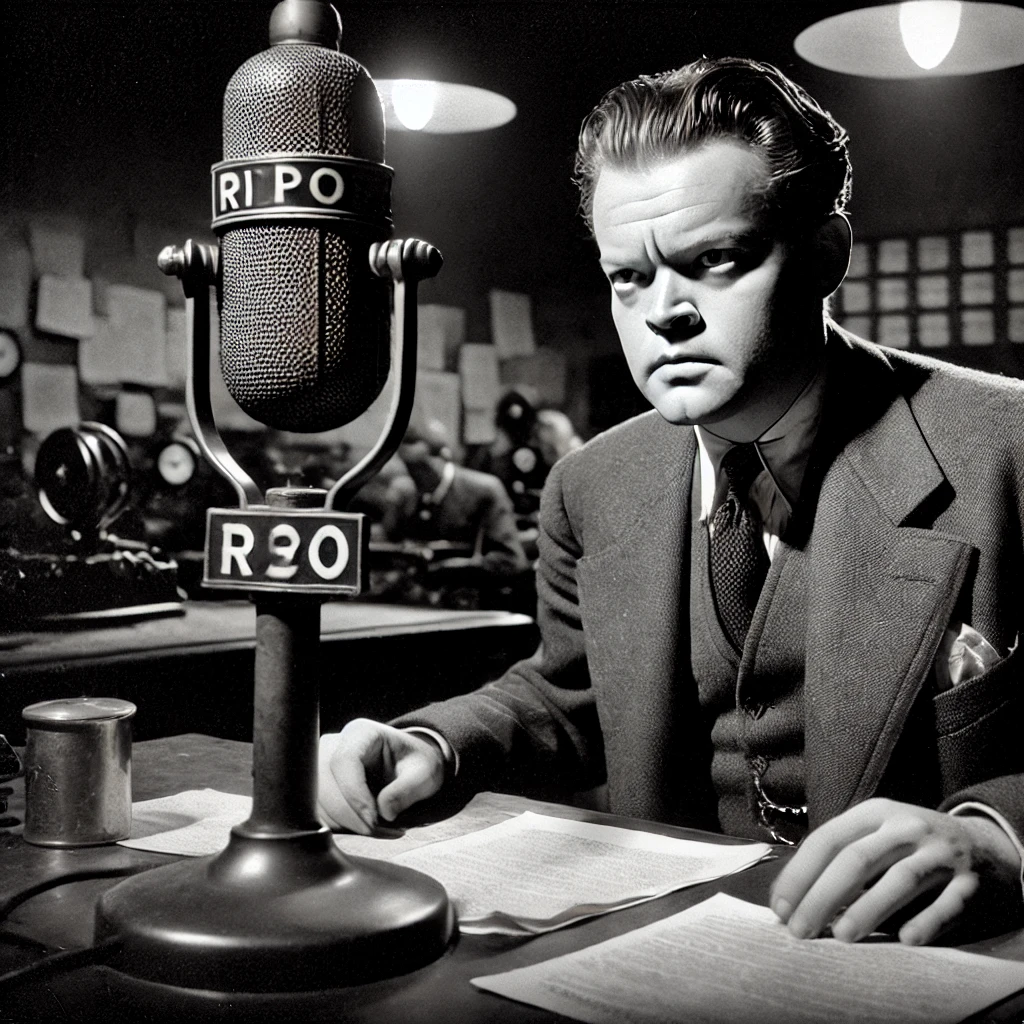On October 30, 1938, Orson Welles and his Mercury Theatre on the Air delivered a radio adaptation of H.G. Wells’s science fiction novel The War of the Worlds, an event that would go down in history as one of the most famous broadcasts in American media. The program, presented as a series of realistic news bulletins, incited panic among some listeners who believed that Earth was truly under attack by Martians. This groundbreaking broadcast not only showcased Welles’s innovative approach to radio storytelling but also highlighted the power of media in shaping public perception and behavior.

A New Era of Broadcasting
The late 1930s marked a period of rapid advancement in radio technology and an increase in the medium’s popularity. As households across America tuned in to their radios for news and entertainment, the potential for radio to influence public opinion became increasingly evident. Orson Welles, a young and talented actor and director, sought to push the boundaries of traditional radio programming by creating a more immersive experience for listeners.
Welles’s adaptation of The War of the Worlds was broadcast live on Halloween Eve, 1938. The program began with a musical interlude, which transitioned into a news bulletin format, effectively simulating a real-time report of a Martian invasion. The first segment, introduced with a dramatic reading of the novel’s premise, captivated the audience. Welles’s use of sound effects and chilling narration added to the authenticity of the broadcast, creating a sense of urgency that would leave a lasting impact on listeners.

The Panic that Followed
As the broadcast unfolded, reports of the fictional alien invasion escalated, detailing the destruction of cities and the havoc wreaked by Martian tripods. Many listeners, unaware that they were tuned into a dramatization, believed the events to be real. Panic ensued in various parts of the country, with individuals taking to the streets, fleeing cities, or seeking shelter, convinced that a national emergency was unfolding.
The reactions to the broadcast highlighted the profound influence that media could wield over the public. The ensuing chaos prompted discussions about the responsibilities of broadcasters and the ethics of storytelling in the media. Critics and scholars began to analyze the psychology behind the panic, questioning how a simple radio play could evoke such strong emotions and reactions from the audience.
Cultural and Historical Impact
The broadcast of The War of the Worlds became a cultural touchstone, illustrating the potent combination of entertainment and reality in mass media. It prompted lawmakers and industry leaders to consider regulations regarding broadcasting, leading to greater scrutiny over the content and manner in which news was presented. The event also solidified Orson Welles’s status as a pioneer in the field of radio drama and established him as a significant figure in American entertainment.

In the years that followed, the broadcast became the subject of numerous studies, articles, and discussions, providing insight into the relationship between media and society. It influenced the way future media creators approached storytelling, especially in how to evoke emotion and manipulate audience perceptions.
Legacy of Orson Welles’s Innovation
The legacy of Welles’s War of the Worlds broadcast continues to resonate today, serving as a reminder of the power of media and the responsibility that comes with it. It exemplifies the potential for storytelling to evoke real emotions and provoke thought, highlighting the thin line between fiction and reality. The broadcast also paved the way for more experimental formats in radio and, later, television, encouraging future creators to explore innovative ways to engage and connect with audiences.
In popular culture, the War of the Worlds broadcast has been referenced and parodied in various media forms, solidifying its place in American folklore. The broadcast serves as an enduring symbol of the impact of mass media on society, reflecting the complexities of communication and the influence of narrative in shaping public understanding.
On October 30, 1938, Orson Welles’s War of the Worlds radio broadcast not only entertained but also transformed the landscape of American media. The dramatic presentation and the ensuing panic highlighted the profound influence of storytelling in the public sphere, raising questions about media ethics and responsibility. As we reflect on this pivotal moment in broadcasting history, we recognize the lasting impact it has had on media practices and the ways in which narratives can shape societal perceptions. The legacy of this broadcast serves as a testament to the power of imagination, creativity, and the intricate relationship between media and reality.
